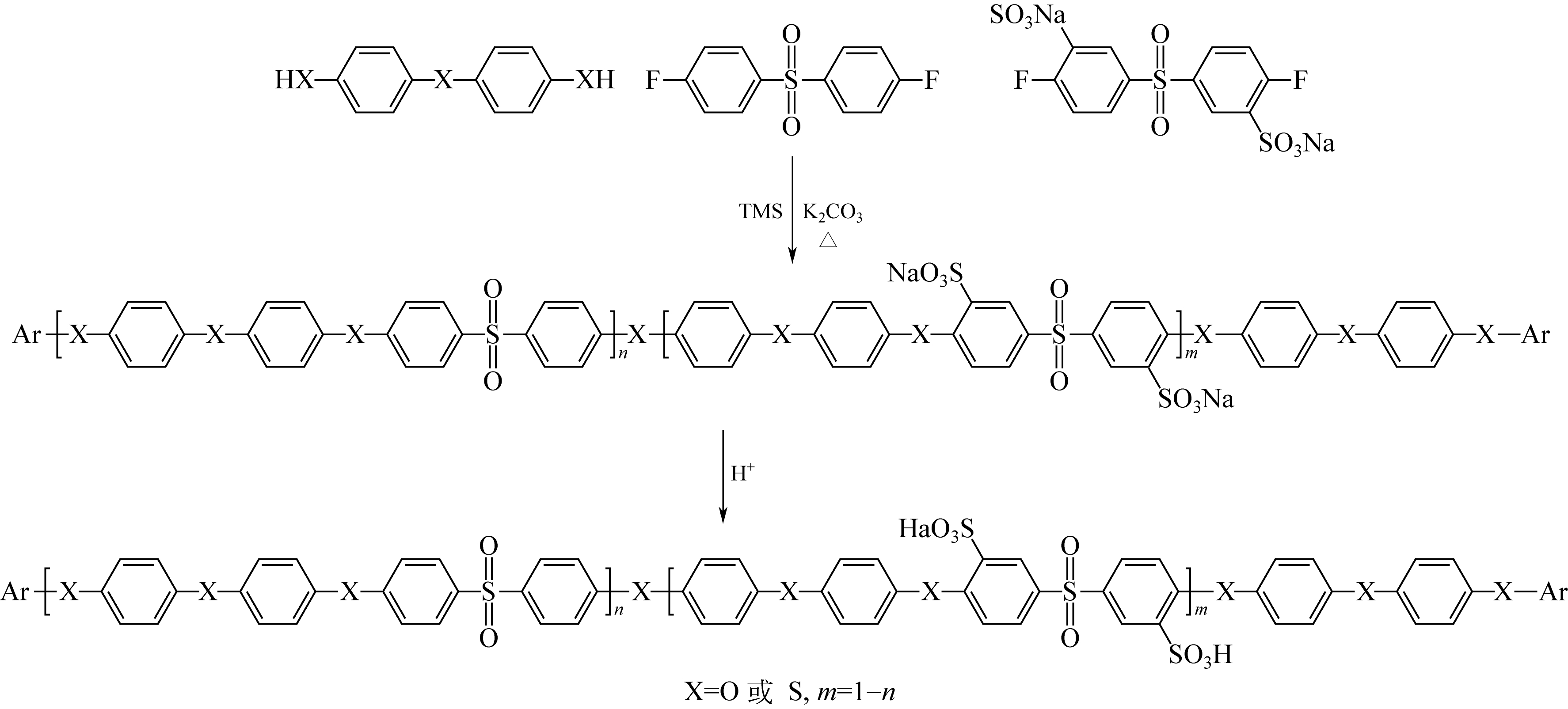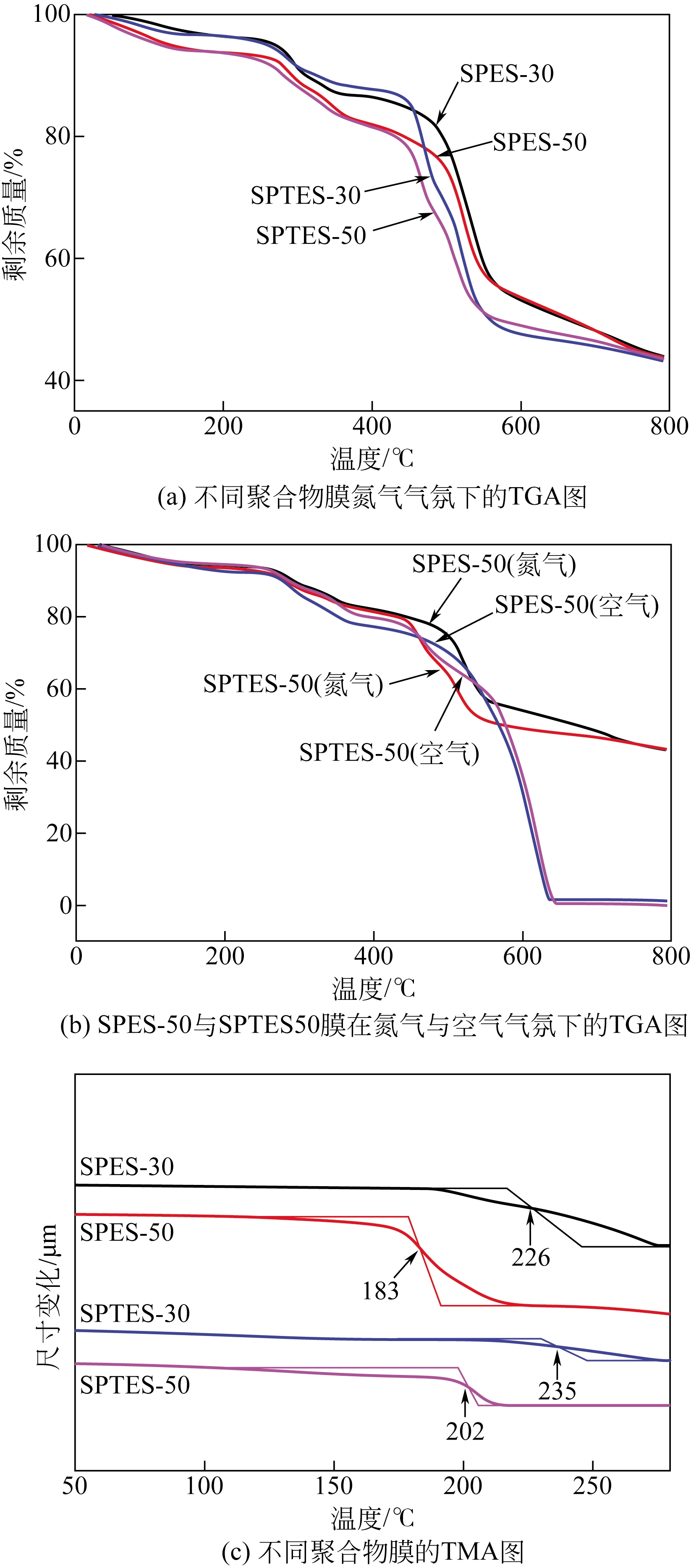| 1 |
LABERTY-ROBERT C , VALLÉ K , PEREIRA F , et al . Design and properties of functional hybrid organic-inorganic membranes for fuel cells[J]. Chemical Society Reviews, 2011, 40(2): 961-1005.
|
| 2 |
XU J , CHENG H ,MA L,et al . Construction of a new continuous proton transport channel through a covalent crosslinking reaction between carboxyl and amino groups[J]. International Journal of Hydrogen Energy,2013,38(24): 10092-10103.
|
| 3 |
HE G , ZHAO J , HU S , et al . Functionalized carbon nanotube via distillation precipitation polymerization and its application in nafion-based composite membranes[J]. ACS Applied Materials & Interfaces,2014,6(17):15291-15301.
|
| 4 |
LI C , ZHANG Y , LIU X ,et al . Cross-linked fully aromatic sulfonated polyamide as a highly efficiency polymeric filler in SPEEK membrane for high methanol concentration direct methanol fuel cells[J]. Journal of Materials Science,2018,53(7): 5501-5510.
|
| 5 |
吴魁, 解东来 . 高温质子交换膜研究进展[J]. 化工进展, 2012, 31(10): 2202-2206.
|
|
WU Kui , XIE Donglai . Research progress in high temperature proton exchange membranes[J]. Chemical Industry and Engineering Progress, 2012, 31(10): 2202-2206.
|
| 6 |
BAKANGURA E , WU L , GE L , et al . Mixed matrix proton exchange membranes for fuel cells: state of the art and perspectives[J]. Progress in Polymer Science, 2016, 57: 103-152.
|
| 7 |
EINSLA M L , YU S K , HAWLEY M , et al . Toward improved conductivity of sulfonated aromatic proton exchange membranes at low relative humidity[J]. Chemistry of Materials, 2008, 20(17): 5636-5642.
|
| 8 |
BAI Z W , DURSTOCK M F , DANG T D . Proton conductivity and properties of sulfonated polyarylenethioether sulfones as proton exchange membranes in fuel cells[J]. Journal of Membrane Science, 2006, 281(1): 508-516.
|
| 9 |
ZHANG H , MA C, WANG J , et al . Enhancement of proton conductivity of polymer electrolyte membrane enabled by sulfonated nanotubes[J]. International Journal of Hydrogen Energy, 2014, 39(2): 974-986.
|
| 10 |
陶丹, 向雄志, 王雷 . 磺酸基在侧链萘环上的磺化聚芳醚质子交换膜的制备与性能研究[J]. 高分子学报, 2014(3): 326-332.
|
|
TAO Dan , XIANG Xiongzhi , WANG Lei . Synthesis and characterization of poly(arylene ether) s proton exchange membranes with sulfonic groups attached on pendent naphthyl rings[J]. Acta Polymerica Sinica, 2014(3): 326-332.
|
| 11 |
沈斌, 汪称意, 徐常, 等 . 一类侧链型磺化聚芳醚砜质子交换膜的合成及表征[J]. 高分子学报, 2016(10): 1409-1417.
|
|
SHEN Bin , WANG Chenyi , XU Chang , et al . Synthesis and characterization of a side-chain type sulfonated poly(arylene ether sulfone)s for proton exchange membranes[J].Acta Polymerica Sinica, 2016(10): 1409-1417.
|
| 12 |
孙园园, 吴雪梅, 甄栋兴, 等 . 静电层层自组装改性SPPESK/PWA质子交换膜[J]. 化工进展, 2015, 34(12): 4285-4289.
|
|
SUN Yuanyuan , WU Xuemei , ZHEN Dongxing , et al . Modification of SPPESK/PWA proton exchange membrane by layer-by-layer self-assembly[J]. Chemical Industry and Engineering Progress, 2015, 34(12): 4285-4289.
|
| 13 |
DAI H , ZHANG H , LUO Q , et al . Properties and fuel cell performance of proton exchange membranes prepared from disulfonated poly(sulfide sulfone)[J]. Journal of Power Sources, 2008, 185(1): 19-25.
|
| 14 |
WILES K B , WANG F , MCGRATH J E . Directly copolymerized poly(arylene sulfide sulfone) disulfonated copolymers for PEM-based fuel cell systems. Ⅰ. Synthesis and characterization[J]. Journal of Polymer Science Part A: Polymer Chemistry, 2005, 43(43): 2964-2976.
|
| 15 |
BAI Z W , HOUTZ M D , MIRAU P A , et al . Structures and properties of highly sulfonated poly(arylenethioethersulfone)s as proton exchange membranes[J]. Polymer, 2007, 48(22): 6598-6604.
|
| 16 |
NORDDIN M N A M , ISMAIL A F , RANA D , et al . The effect of blending sulfonated poly(ether ether ketone) with various charged surface modifying macromolecules on proton exchange membrane performance[J]. Journal of Membrane Science, 2009, 328(1): 148-155.
|
| 17 |
ZHAO Y , JIANG Z , LIN D , et al . Enhanced proton conductivity of the proton exchange membranes by the phosphorylated silica submicrospheres[J]. Journal of Power Sources, 2013, 224(15): 28-36.
|
| 18 |
LI X G , SHAO H T , BAI H , et al . High-resolution thermogravimetry of polyethersulfone chips in four atmospheres[J]. Journal of Applied Polymer Science, 2010, 90(13): 3631-3637.
|
| 19 |
WEI Y C , SHANG Y B , ZHANG H Y , et al . Modified nanocrystal cellulose/fluorene-containing sulfonated poly(ether ether ketone ketone) composites for proton exchange membranes[J]. Applied Surface Science, 2017, 416(15): 996-1006.
|
| 20 |
SHEN L , XIAO G , SUN G . Sulfonated poly(arylene thioether ketone ketone sulfone)s for proton exchange membranes with high oxidative stability[J]. E-Polymers, 2005, 5(1): 321-330.
|
| 21 |
PARNIAN M J , ROWSHANZAMIR S , GASHOUL F . Comprehensive investigation of physicochemical and electrochemical properties of sulfonated poly(ether ether ketone) membranes with different degrees of sulfonation for proton exchange membrane fuel cell applications[J]. Energy, 2017, 125(15): 614-628
|
| 22 |
TAKIMOTO N , WU L , OHIRA A , et al . Hydration behavior of perfluorinated and hydrocarbon-type proton exchange membranes: relationship between morphology and proton conduction[J]. Polymer, 2009, 50(2): 534-540.
|
| 23 |
MOLLÁ S , COMPAÑ V . Nanocomposite SPEEK-based membranes for direct methanol fuel cells at intermediate temperatures[J]. Journal of Membrane Science, 2015, 492(15): 123-136.
|
| 24 |
HASANI-SADRABADI M M , DASHTIMOGHADAM E , SARIKHANI K , et al . Electrochemical investigation of sulfonated poly(ether ether ketone)/clay nanocomposite membranes for moderate temperature fuel cell applications[J]. Journal of Power Sources, 2010, 195(9): 2450-2456.
|
| 25 |
FENG S , SHEN K , WANG Y , et al . Concentrated sulfonated poly(ether sulfone)s as proton exchange membranes[J]. Journal of Power Sources, 2013, 224(15): 42-49.
|
| 26 |
LIN H L , YU T L , HUANG C H , et al . Morphology study of Nafion membranes prepared by solutions casting[J]. Journal of Polymer Science Part B: Polymer Physics, 2010, 43(21): 3044-3057.
|
| 27 |
WANG J , JIANG S , ZHANG H , et al . Enhancing proton conduction and methanol barrier performance of sulfonated poly(ether ether ketone) membrane by incorporated polymer carboxylic acid spheres[J]. Journal of Membrane Science, 2010, 364(1): 253-262.
|
 ),Shanshan LIU,Xiang SUN,Zhenyu XIAO,Huili DING(
),Shanshan LIU,Xiang SUN,Zhenyu XIAO,Huili DING( )
)





